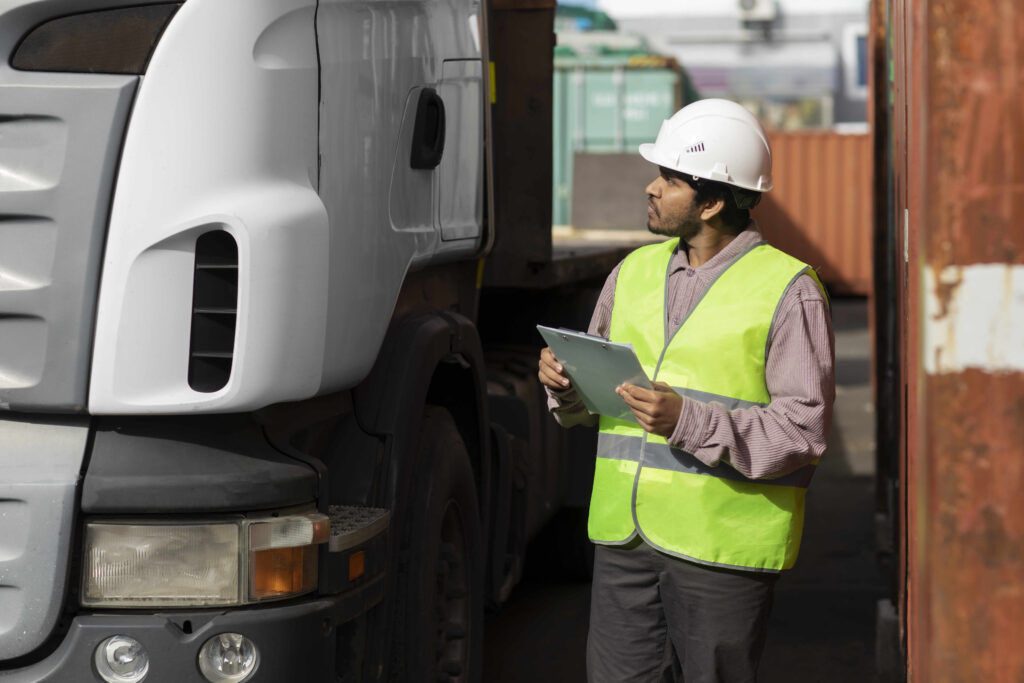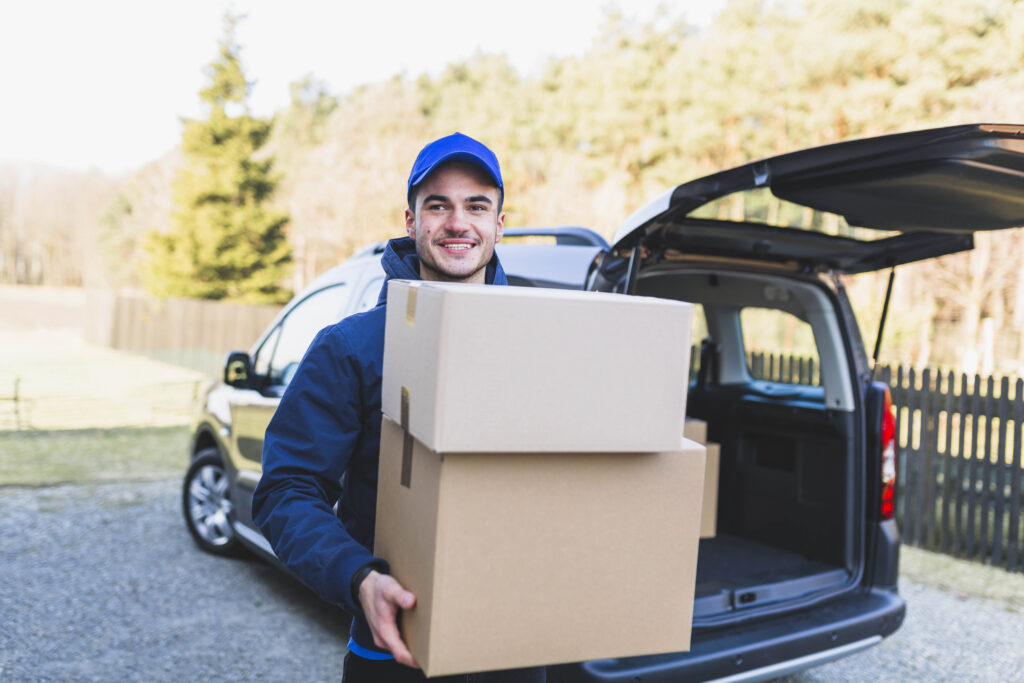The Last Mile Delivery Problem Demystified: Innovative Solutions That Work
The Last Mile Delivery Problem Demystified: Innovative Solutions That Work
Overview: Redefining Success in the Last Mile
The logistics landscape is undergoing a rapid transformation, with the "last mile" standing as a pivotal stage in the delivery journey. This critical phase, where goods transition from distribution hubs to customers' doorsteps, plays a decisive role in shaping customer satisfaction. However, the last mile is also fraught with challenges, from rising operational costs to inefficiencies that hinder timely deliveries.
In this blog, we’ll demystify the complexities of last-mile delivery, shedding light on the obstacles businesses face and the innovative solutions that are revolutionizing the industry. From advanced technologies to customer-centric strategies, discover how businesses can turn the last mile into a competitive advantage, ensuring operational excellence and customer delight in today’s dynamic logistics ecosystem.
Table of Contents:
- Introduction: Understanding the Last Mile Problem
- What Makes the Last Mile So Complex?
- Overcoming Barriers to Efficient Deliveries
- Meeting Sustainability Goals in Logistics
- How Optimized Last-Mile Delivery Elevates Customer Experience
- Sustainable and Scalable Advanced Approaches to Last-Mile Solutions
- How Shipox Revolutionizes Last-Mile Logistics
- Conclusion: Navigating the Last Mile with Confidence
-
Introduction: Understanding the Last Mile Problem
The last mile of delivery refers to the final phase of the supply chain, transporting goods from distribution centers to customers’ doorsteps. While it might seem straightforward, this stage poses unique challenges, making it one of the most expensive and time-consuming parts of the logistics process.
In 2025, as consumer expectations for speed, transparency, and convenience soar, businesses are under immense pressure to deliver quickly and efficiently. However, last-mile delivery accounts for up to 53% of total shipping costs, amplifying the need for innovative strategies to tackle inefficiencies and reduce expenses.
-
What Makes the Last Mile So Complex?
The last mile is fraught with issues that hinder efficiency and customer satisfaction. Let’s examine the core challenges:
- High Costs:
The combination of labor, fuel, and operational expenses makes last-mile delivery disproportionately costly. Every inefficiency in the process compounds these expenses.
- Lack of Transparency:
Many businesses struggle with limited visibility into their supply chain. Real-time tracking and updates are often missing, leaving customers in the dark about their deliveries.
- Poor Route Optimization:
Inefficient routing increases travel time, fuel consumption, and delivery delays. Without advanced tools, businesses can’t dynamically adjust routes to avoid traffic or obstacles.
- Failed Deliveries:
Missed delivery attempts due to customer unavailability or address issues waste valuable resources and damage customer trust.
- Outdated Infrastructure and Tools:
Reliance on manual processes and legacy systems creates bottlenecks, reducing the scalability and responsiveness of last-mile logistics.
-
Overcoming Barriers to Efficient Deliveries
The challenges of the last mile demand creative and technological solutions. Here are five strategies that address these issues effectively:
- Improve Customer-Warehouse Proximity:
Locating distribution centers closer to high-demand regions can significantly reduce delivery times, fuel consumption, and costs. Additionally, these hubs can act as customer pick-up or return points, enhancing convenience and ROI on warehouse operations.
- Invest in Technology for Delivery Optimization:
Technologies like AI and machine learning offer real-time data analysis for route optimization and driver assignment. These tools reduce cycle times, improve ROI, and streamline multi-stop deliveries.
- Dynamic Vehicle Routing:
Advanced software can dynamically adjust routes based on real-time factors like traffic, weather, and delivery windows. This ensures minimal delays and maximizes vehicle efficiency.
- Enhance Customer Communication:
Providing real-time updates through SMS, emails, or apps ensures customers are informed at every step of the delivery process. This proactive communication reduces failed delivery attempts and builds trust.
- Implement Real-Time Delivery Tracking:
Comprehensive tracking systems enable businesses and customers to monitor delivery progress. Features like proof of delivery, contactless payments, and real-time updates enhance the overall delivery experience.
-
Meeting Sustainability Goals in Logistics
Sustainability is vital in logistics, focusing on eco-friendly practices to meet environmental goals. Businesses are adopting innovative solutions to align operations with consumer values and reduce their carbon footprint.
- Electric Vehicles (EVs):
Implementing EV fleets to minimize carbon emissions and promote greener transportation. - Optimized Routes:
Using advanced route planning to eliminate unnecessary mileage and save fuel. - Smart Warehousing:
Incorporating energy-efficient technologies and sustainable packaging solutions in warehouse operations.
-
How Optimized Last-Mile Delivery Elevates Customer Experience
The last mile is a pivotal touchpoint between businesses and customers. By addressing its challenges, companies can achieve:
- Faster Deliveries:
Optimized routes and real-time updates ensure timely deliveries, meeting customer expectations for speed. Ready to transform your logistics? Request a demo of Shipox today and take the first step toward last-mile excellence.
- Flexible Solutions:
Offer same-day, next-day, or on-demand delivery options to cater to varied customer needs, enhancing convenience and loyalty.
- Transparent Communication:
Real-time tracking and proactive updates build customer confidence and satisfaction. Features like live tracking apps add a layer of reassurance for modern consumers.
6. Sustainable and Scalable Advanced Approaches to Last-Mile Solutions
Investing in advanced last-mile delivery platforms transforms logistics into a more efficient and eco-friendly process. These solutions provide businesses with scalable, adaptable tools to meet fluctuating demands and consumer expectations. By leveraging modern technologies, companies can enhance operational efficiency while promoting sustainability.
- Reduced Costs
Advanced platforms optimize routes and reduce unnecessary mileage, lowering fuel consumption and labor expenses. This cost efficiency improves margins and enables businesses to allocate resources more effectively. - Enhanced Customer Experience
Faster deliveries, accurate ETAs, and transparent communication elevate customer satisfaction. Real-time tracking and delivery notifications create a seamless experience that fosters loyalty and trust. - Improved Margins
Data-driven insights identify inefficiencies and provide actionable strategies for improvement. Companies can optimize resources, reduce turnaround times, and ultimately boost profitability. - Scalability
With tools that adapt to peak seasons and demand surges, businesses can scale operations without sacrificing service quality. Crowdsourcing and automated scheduling ensure smooth transitions during high-volume periods. - Sustainability
Route optimization minimizes environmental impact by reducing emissions. Incorporating electric vehicles (EVs) and green delivery methods aligns with consumer values and promotes a positive brand image.
-
How Shipox Revolutionizes Last-Mile Logistics
Platforms like Shipox play a transformative role in last-mile delivery. Designed to address modern challenges, Shipox offers:
- Real-Time Tracking and Analytics:
Shipox provides comprehensive visibility into delivery operations with real-time updates and actionable insights for better decision-making. - Automatic Route Optimization:
Using advanced algorithms, Shipox designs efficient routes, reducing travel time, fuel consumption, and overall costs. - Enhanced Customer Interaction:
Live tracking, proactive notifications, and flexible delivery options ensure a smooth and satisfying customer experience. - Seamless Integration:
Shipox integrates effortlessly with ERP and inventory systems, enabling streamlined operations without workflow disruptions. - Sustainability Initiatives:
By optimizing routes and promoting green vehicle usage, Shipox supports eco-friendly logistics and sustainability goals.
-
Conclusion: Building a Future of Reliable, Faster Deliveries
The last mile delivery problem is a significant hurdle, but it also offers immense opportunities for innovation and customer satisfaction. By adopting advanced solutions like Shipox, businesses can streamline their logistics, cut costs, and exceed customer expectations.
Investing in last-mile optimization not only enhances operational efficiency but also ensures a competitive edge in the rapidly evolving logistics landscape. The future of delivery lies in innovation, transparency, and customer-centric approaches—and the time to act is now. Request a demo of Shipox today and take the first step toward last-mile excellence.
Recent Blogs
[Sassy_Social_Share type=”floating” align=”right” top=”250″]



